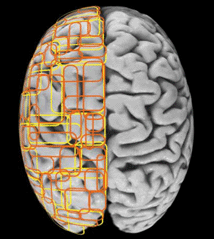|
|
| 
| | A group
can comprise of 1-3 persons enrolled in the class. Each group will
pick a particular "mini-research" question pertinent to this course
and investigate the question using simulations and/or analysis. Each
group will present their results to class during the last week of classes,
and will submit a short report (10-15 pages max including figures
and references) via email to Raj, Adrienne, and Rich before midnight March 12.
Presentation details: You may bring a powerpoint presentation on a USB stick if you want to use the class laptop or bring your
own laptop if your presentation requires special software or uses demos or videos.
In the latter case, you should test your laptop with the projection system on a class day before presentation day to make sure the projector recognizes your laptop.
Guidelines for writing the Project Report
Please structure your writeup as a formal research report, including:
- Introduction: Should include a statement of your question and aims.
- Background: Focused explanation of the critical ideas behind your project.
- Methods: Brief description of equations, algorithms, data. Include pseudo-code if it is helpful but more lengthy code samples, if you feel they are needed, can be put in appendices.
- Results: Describe the outcome of your study, including figures from your models, data or simulations.
- Conclusions: Summarize your results, interpret them, note any drawbacks or flaws that you discovered in your study design, suggest potential resolutions or possible followup studies.
- References.
Papers and links pertinent to project ideas (keep checking for updates!):
- Propagation of activity in networks: 1, 2.
- Project ideas from Methods in Computational Neurosci. course: 1.
- Memory and amplification without feedback in networks: 1, 2, 3.
- Larry Abbott's papers on network models: 1.
- Sparse coding and learning spatial/spatiotemporal filters: 1, 2, 3, 4.
- Fast optimal control without reinforcement learning: 1, 2.
- Deep networks for learning and dimensionality reduction: 1, 2, 3.
- Gaussian process method for supervised learning: Book,Website.
- Gaussian process latent variable models for unsupervised learning and dimensionality reduction: Paper, Example application.
- Liquid State Machines: Website with links to papers.
- Learning in Chaotic Neural Networks: 1.
- Synaptic Computation: Review article 1, Review article 2.
- Spike-timing based synaptic plasticity and learning in networks: 1, 2, 3.
- Short-term synaptic plasticity (Dynamic synapses): 1, 2, 3, 4, 5.
- Reinforcement Learning: 2017 Book, Review article, Example Application.
- Deep Reinforcement Learning: DeepMind Nature paper on learning Atari games.
- More recent deep learning and RL papers: DeepMind publications.
Potential Topics for Group Projects:
- Simple models of spiking neurons
- Neural networks for principal component analysis, sparse coding, ICA, etc.
- Information theoretic analysis of spiking data (contact Adrienne for suggestions)
- Neural implementation of Bayesian models
- Synchronous coding and multiplexing information using spikes and spike-timing dependent plasticity
- Dendritic computation
- Computational role of backpropagating spikes in cortical neurons
- Computation using dynamic synapses and spikes
- Cortical feedback and hierarchical computation
- Using spike-timing based plasticity for predictive coding
- Models of nonclassical receptive fields in the visual cortex
- Relationship between firing rate and membrane potential of a neuron
- Effects of noise in neuronal networks and "stochastic resonance"
- Learning spatiotemporal filters from natural movies
- Learning spectrotemporal filters from natural sounds and speech
- Models of reinforcement learning and applications
- Unsupervised learning and its relation to statistical machine learning
- Supervised learning and its application in robotics, BCI, etc.
- Non-traditional learning in neurons (adapting channel densities, dendritic structure adaption, adding new neurons in a network, etc.)
- Evolutionary methods for learning the structure of networks
- Decoding and classification of brain-derived signals (spikes, EEG, etc.) for applications such as Brain-Computer Interfaces (BCIs)
Contact Adrienne, Raj or Rich if you are interested in pursuing one of these
topics. Projects on other topics related to the course or to your research interests are also welcome.
|


 CSE Home
CSE Home